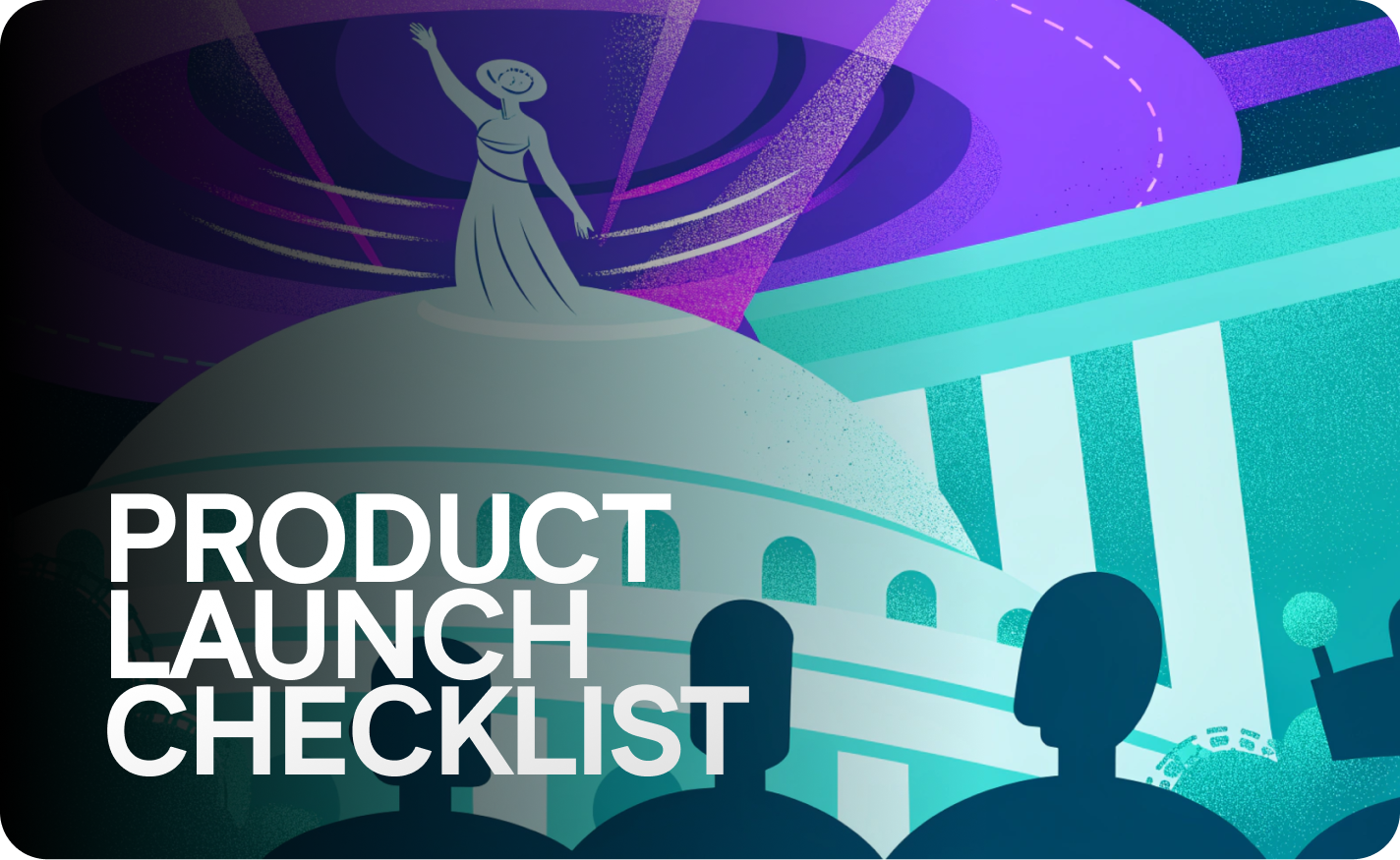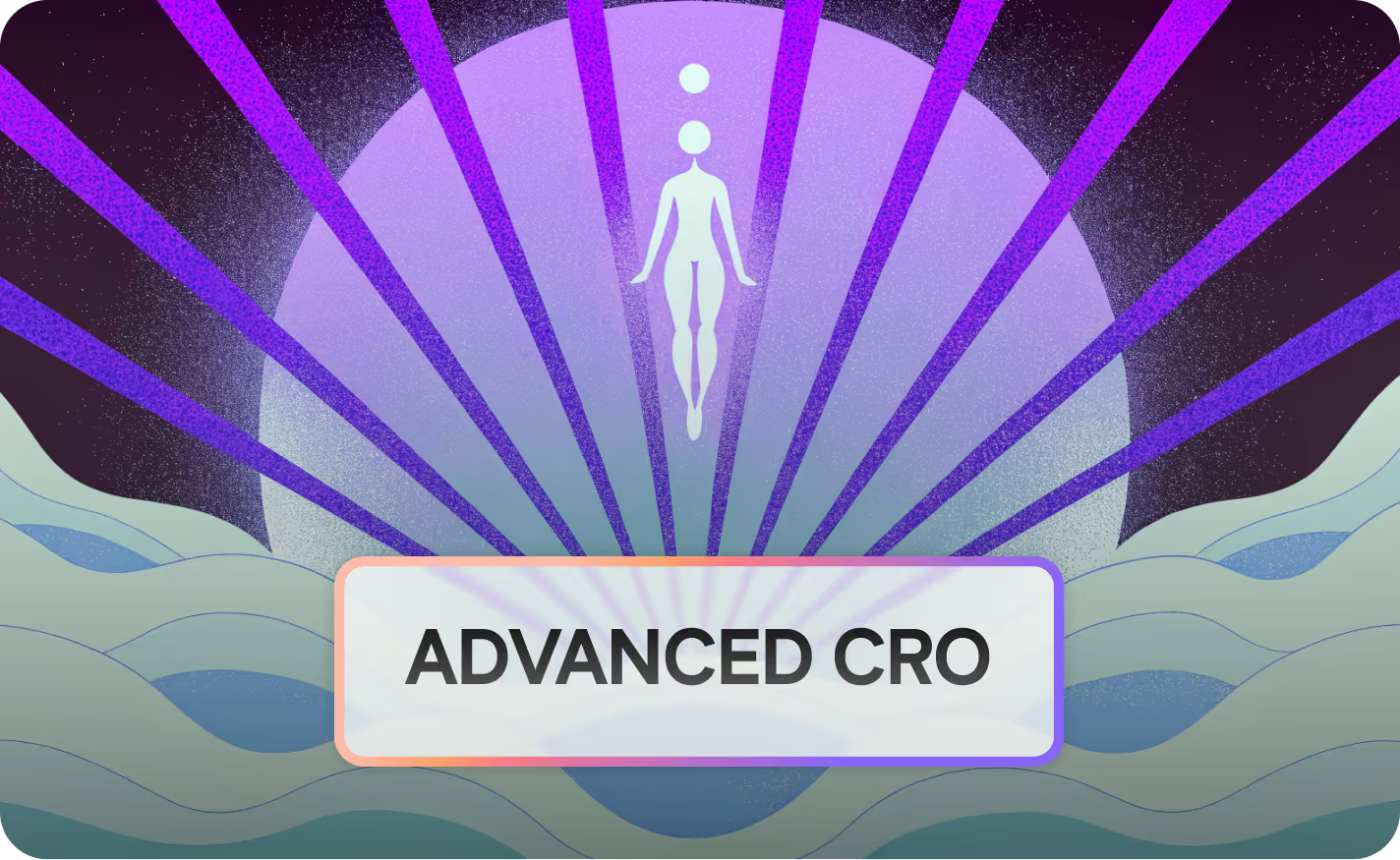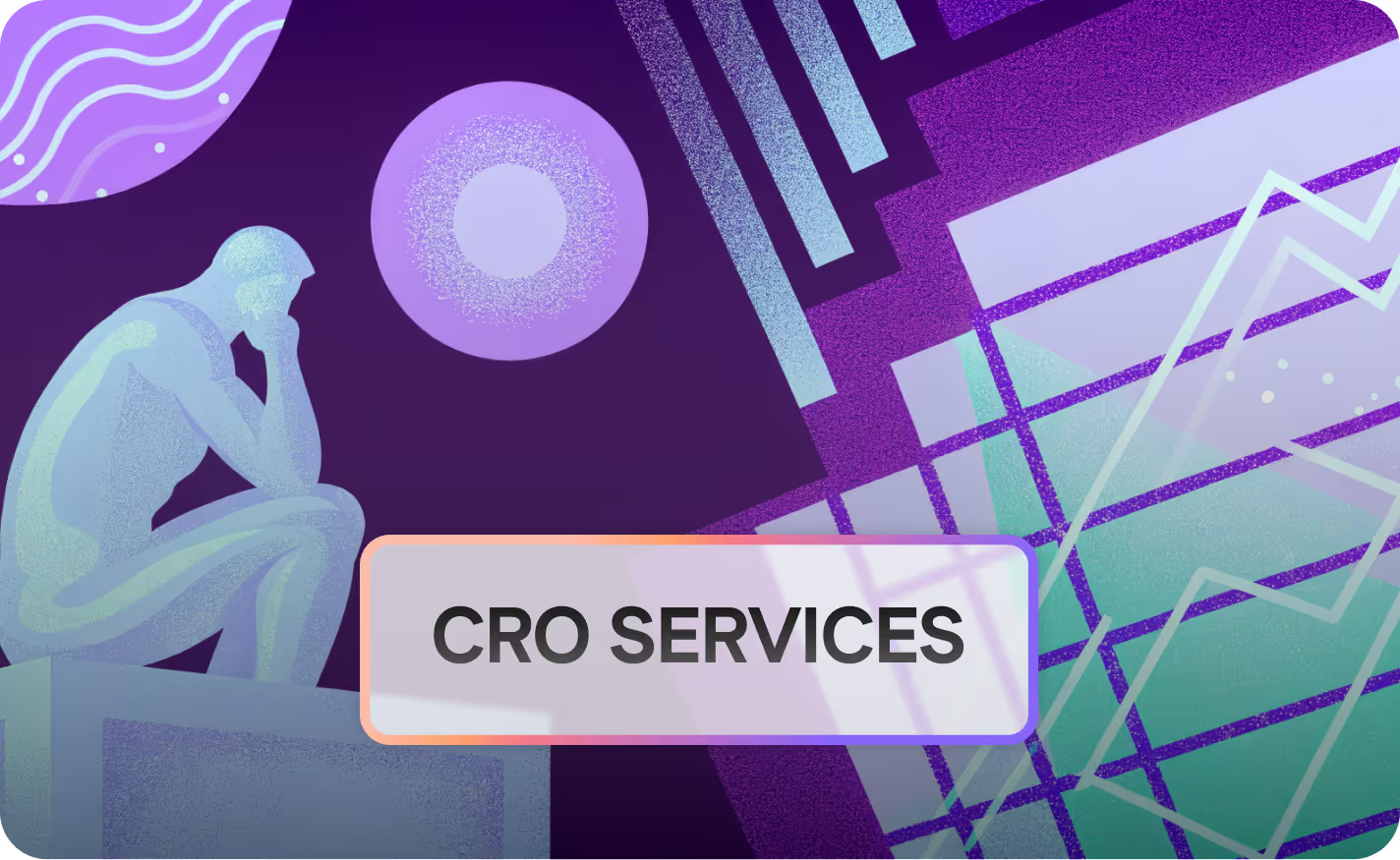New Product Launch Checklist: Step-by-Step Guide + Template

Introduction to Product Launch Checklist

Launching a new product is a complex endeavor. This product launch checklist provides a step-by-step guide to ensure a successful product launch. By incorporating agile methodologies and focusing on user session data, you can preempt potential pitfalls and achieve a flawless rollout.
What's the tangled web of launch tasks turning every product launch into a high-stakes gamble? Launching a new product release or even a new feature for your specific product demands precision across product positioning, value proposition, and marketing plan to sidestep the 28% failure rate where launches miss expectations entirely.
This product launch checklist arms your team with agile steps for launch readiness, from soft launch validation of your minimum viable product to official launch orchestration, ensuring product readiness that preempts pitfalls in product launch marketing.
By weaving in agile methodologies, you boost success to 75.4% outpacing traditional approaches by a slim but critical margin while focusing on user session data to refine the product name, product documentation, and ecosystem around your product.
Picture auditing launch best practices: Does your free product teaser align with the perfect product vision? Or does the launch event hype deliver a smooth launch without the 42% "no market need" trap
Pre-Launch Audit: Essential Checks for Successful Product Launch

A pre-launch audit is crucial for identifying potential problems before they impact your product release. This stage involves rigorous checks and validations, ensuring that every aspect of your product, from its initial ideation to its beta phase, aligns with your target audience's needs and expectations. By meticulously following this checklist, you can significantly increase your chances of a successful product launch.
Ideation to Beta: The Critical Path
Smartsheet Integration: Leveraging tools like Smartsheet can streamline your product launch plan. Their free checklists cover everything from initial ideation to final metrics, facilitating comprehensive audits. This approach mitigates approximately 40% of execution gaps often found in founder reviews, ensuring a more robust and well-prepared new product launch. According to Smartsheet's data, these checklists provide a structured framework for managing the entire product development lifecycle.
ProdPad Sequencing: ProdPad's 2025 product launch checklist sequences over 15 steps, from initial market research to thorough analysis. It emphasizes agile checkpoints, designed to preempt up to 70% of failures resulting from unvalidated UX. This step-by-step guide ensures that all critical areas are addressed before the product release. ProdPad's methodology highlights the importance of continuous validation throughout the product launch process. ProdPad's checklist offers a detailed sequence for managing all steps.
Comprehensive Planning: Smartsheet’s Gantt-integrated plan provides a detailed timeline from ideation to metrics, including phases such as sales enablement. This structured approach ensures that every aspect of the launch activities is meticulously planned and executed. By focusing on these critical steps, the product team can better manage resources and timelines, contributing to a more effective product launch.
Identifying Drop-Off Blind Spots

Understanding User Intent: There are approximately 1300 monthly queries for new product launches, indicating a high level of strategic interest. However, Indie Hackers failure analyses suggest that 70% of these launches fail due to untracked user friction. Addressing these issues is vital for achieving a successful product launch and ensuring product adoption. Indie Hackers analyses highlight the critical need for user-centric strategies.
Session Replays for Insight: Use LiveSession to pinpoint onboarding drop-offs with pixel-perfect session replays during beta phases. Understanding where users encounter friction allows for targeted improvements, significantly enhancing the overall user experience. By leveraging LiveSession, you can identify and resolve pain points before the product release, leading to a smoother and more successful product launch.
Proactive Measures: To ensure a strong launch, it’s important to implement proactive measures for identifying and addressing potential user issues. LiveSession offers tools to analyze user behavior and pinpoint areas where users are encountering difficulties. This allows the product team to make informed decisions, ensuring that the new product meets user expectations and achieves high levels of product engagement.
Leveraging Amazon Strategies for Validation
Customer-Centric Approach: Amazon's success is largely attributed to its customer-centric approach. This strategy emphasizes understanding and addressing customer pain points, ensuring that the product design aligns with user needs. By adopting a similar approach, the product manager can increase the likelihood of a successful product launch and promote your product effectively.
Data-Driven Decisions: Amazon leverages extensive data to validate product features and optimize the user experience. By analyzing user behavior and feedback, they continuously refine their offerings to meet market demands. LiveSession provides similar capabilities, allowing you to gather valuable insights into user interactions and make data-driven decisions about your product roadmap and future product enhancements.
Iterative Improvements: Amazon continuously iterates on its products and services based on user feedback and market trends. This iterative approach ensures that their offerings remain relevant and competitive. Similarly, a product launch strategy should include ongoing analysis and refinement, enabling the product team to adapt to changing market conditions and deliver a great product that resonates with the target audience.
Team Coordination Blocks: Maximizing Efficiency in Product Launch

Cross-Functional Tasks for a Seamless Launch
Effective cross-functional team coordination is vital for a successful product launch. A well-orchestrated effort ensures all departments are aligned and working towards the same goals, which can significantly reduce the risk of delays or miscommunications. Utilizing a structured approach helps streamline tasks and enhance overall efficiency throughout the product development lifecycle.
Task Bundling: Tools like Notion provide launch template bundles that include pricing strategies, media plans, and essential links for Product Hunt readiness. Pairing these with Airtable's 2025 product launch checklist facilitates cross-team coordination. These templates ensure all critical tasks are accounted for and assigned appropriately, promoting better collaboration and reducing the likelihood of overlooking key details. A streamlined workflow is essential for achieving a successful launch and bringing a new product to market efficiently.
Enhanced Collaboration: When you launch a new product, collaboration ensures that all teams are aware of their responsibilities and timelines. A successful launch depends on how well the product team can work together. This way, you can promote your product effectively and make sure your new users have the best possible experience with your product or service.
Utilizing Reddit Insights for Competitive Analysis
Reddit, particularly forums like r/ycombinator, offers valuable insights from founders who have navigated the product launch process. These discussions often reveal effective strategies and common pitfalls, providing a unique perspective on what works and what doesn't. Tapping into this community knowledge can significantly enhance your product launch strategy.
Growth Checklists: Reddit YC founders recommend growth checklists that limit features pre-launch, boosting velocity by 20% through clarified scopes. These checklists help product managers focus on essential elements, ensuring the launch process remains streamlined and efficient. By prioritizing key features, product teams can avoid overcomplicating the initial product release and improve the chances of a successful launch. Reddit's YC forum provides practical advice from experienced founders.
Competitive Edge: Keeping an eye on competitors by checking out what people are saying on Reddit can give you an edge. It's a great way to find out what people like and don't like about other products, so you can make sure your new product launch is even better. Pay attention to the target audience, what makes their product design better, and any features your product or feature might be missing to meet demand. A successful launch requires that you understand your market and position your product well.
Replay Validation to Ensure UX Readiness
Ensuring your user experience (UX) is polished and intuitive before the product release is critical for product adoption and overall success. Session replay tools offer a powerful way to validate UX assumptions and identify areas where users might be struggling. By observing real user interactions, you can gain valuable insights and make data-driven improvements.
Identifying UX Issues: Use LiveSession to observe how real users interact with your product during the beta phase. These session replays can reveal usability issues and pain points that might not be apparent through traditional testing methods. Identifying and addressing these issues before the launch date can significantly improve user satisfaction and product adoption. Pay close attention to how new users navigate your product launch and where they may experience pain points.
Iterative Design: By continuously analyzing session replays, product teams can iteratively refine the product design and user interface. This ongoing feedback loop ensures that the product remains user-friendly and aligned with the target audience's needs. By validating your product with real user data, you can significantly increase the likelihood of a successful product launch and ensure your go-to-market strategy aligns with user expectations.
Ready to launch your product with confidence? Try LiveSession today and see how user session replays can transform your product launch strategy. Sign up now for a free trial and ensure your next launch is a success.
Risk Mitigation Scans: Preempting Pitfalls in New Product Launch
Mitigating risks is a critical component of any successful product launch. Identifying potential pitfalls and implementing strategies to address them can significantly increase the chances of a smooth and successful rollout of your new product. By focusing on risk mitigation, product teams can minimize potential disruptions and ensure that the new product launch meets its objectives.
Analyzing Failure Statistics: Lessons from Medium’s Bootcamp
Understanding the Landscape: According to [Medium analyses], Harvard data indicates that 90-95% of startups fail, with 70% of these failures attributed to poor market fit. This highlights the importance of thorough market research and validation before launching a new product. Understanding these failure statistics provides valuable insights for product teams aiming to launch a product effectively. It's important to launch a product that meets the needs of its target audience, making thorough market research crucial.
Avoiding Common Traps: Many new product launches stumble due to easily avoidable issues, such as misunderstanding the target audience or neglecting essential market research. These oversights can lead to poor product adoption and ultimately, product failure. By learning from past mistakes and focusing on user-centric strategies, product teams can avoid these common traps and enhance the likelihood of a successful product launch.
Risk Awareness: Analyzing failure statistics makes you more aware of the risks associated with product launches. Being aware of these risks can encourage product teams to make better decisions and be more strategic. This allows you to focus on delivering the best product possible.
Inferences from Session Logs to Identify Risks
Data-Driven Insights: Session logs provide a wealth of data about how users interact with your product. By analyzing these logs, you can identify patterns, pain points, and areas where users are struggling. This data-driven approach allows for informed decision-making and targeted improvements, ensuring that the new product launch is aligned with user needs and expectations. You can see how users interact with the product or service and then adjust accordingly to meet demand.
Identifying Friction Points: Analyzing session logs can reveal specific areas where users encounter friction. For example, if a significant number of users are dropping off at a particular step in the onboarding process, this indicates a potential usability issue. Identifying and addressing these friction points can significantly improve user satisfaction and product adoption. A smooth user experience is essential for a successful launch and long-term product engagement.
Proactive Mitigation: You can see potential issues that may arise during the product launch by reviewing session logs. This allows you to fix these errors and prevent negative user experiences. This in turn ensures that the product release is as successful as possible.
Strategies to Reduce Risk by 15% Using Session Replays
Enhanced User Understanding: Embedding session replays into your risk mitigation strategy can reduce risk by 15%. [Medium's analysis] supports this claim, highlighting the importance of understanding user behavior. By watching real user interactions, product teams gain a deeper understanding of how users perceive and use the product, enabling more effective improvements and enhancements. You can promote your product effectively, ensuring your new users have the best possible experience with your product or service.
Targeted Improvements: Session replays allow for targeted improvements based on real user data. By identifying specific areas where users are struggling, product teams can focus their efforts on addressing those pain points. This targeted approach ensures that resources are used efficiently and that improvements have a meaningful impact on user satisfaction and product adoption. Using product marketing and analysis can improve the product roadmap by seeing what consumers like.
Improving Product Adoption: LiveSession helps improve your product adoption because it allows your product team to identify and solve user pain points that could impact the product or feature launch. With LiveSession you can address friction points so new users have the best user experience possible.
Ready to launch your product with confidence? Try LiveSession today and see how user session replays can transform your product launch strategy. Sign up now for a free trial and ensure your next launch is a success.
Post-Launch Verification: Ensuring Effective Product Launch

After the product release, verification is crucial to ensure that everything is working as expected and that the product is meeting its intended goals. This stage involves establishing metric baselines, adopting evaluation best practices, and implementing iteration hooks for continuous improvement. By focusing on these key areas, product teams can ensure a successful product launch and long-term product adoption.
Establishing Metric Baselines for Success
Tracking Initial Performance: Establishing metric baselines immediately after the product release is essential for evaluating its initial performance. These baselines provide a reference point for measuring future progress and identifying areas that require attention. Key metrics may include user engagement, conversion rates, and customer satisfaction. Use LiveSession to measure feature adoption, DAU (Daily Active Users), and product stickiness. It is important to track product features, new users, and the overall product experience.
ASAP MVP Tests: Tom's tip: ASAP MVP tests yield initial metrics gold. Early MVP tests can help establish realistic benchmarks and identify potential issues before they escalate. These tests provide valuable insights into user behavior and preferences, informing subsequent improvements. Start by testing your product or feature with a small group of users to collect initial data and feedback. Secure your edge now—sign up for LiveSession and replay your first user session today for that $1.4M trajectory boost.
Data-Driven Decisions: These baselines enable data-driven decisions about future development and marketing strategies. You can make adjustments as needed by analyzing how metrics change over time. This helps in continually refining the product to make sure it aligns with user needs and market trends. Product management must rely on data to continuously improve the new product.
Adopting AgilityPR Best Practices for Evaluation
Regular Assessments: AgilityPR emphasizes the importance of regular assessments and iterative improvements after a product launch. This approach ensures that the product remains aligned with market needs and user expectations. By continuously evaluating performance and making adjustments, product teams can maximize the chances of a successful launch and long-term product adoption. A successful launch and iterative design are critical for the best product.
Feedback Loops: Establishing feedback loops with users is a key component of AgilityPR's best practices. This involves actively soliciting feedback from users and incorporating their suggestions into future product updates. This user-centric approach ensures that the product remains relevant and valuable to its target audience. Always promote your product effectively by listening to your users.
Continuous Improvement: Following AgilityPR’s guidance, make ongoing improvements that help refine your product based on user feedback and real-world performance data. Regular evaluations ensure that any pain points are identified early and addressed effectively, improving the product launch strategy. By focusing on what new users need, product design improvements can be implemented quickly.
Iteration Hooks from Aha! Roadmaps for Continuous Improvement
Roadmap Integration: Aha! roadmaps provide a structured framework for planning and managing product iterations. By integrating post-launch feedback and performance data into your roadmap, you can ensure that future product updates are aligned with user needs and business goals. Aha! roadmaps also assist you in setting clear priorities and managing the product lifecycle. Be sure to check whether the existing product needs to be updated or if a completely new product is needed. It is vital to a successful product launch.
User Signals: ReplyGuy pivoted from a failed launch to $10k MMR and a six-figure exit, fueled by post-launch iteration on user signals—echoing a bootstrapped SaaS's $1M ARR path without ads. Analyzing user behavior and feedback allows you to identify areas where the product can be improved. By focusing on these areas, you can drive product adoption and improve user satisfaction. Replay post-launch rage clicks for 25%+ adoption lifts, like Golfshot's playbook.
Product Adoption: Post-launch iterations guided by Aha! roadmaps drive product adoption through data-backed strategies. Prioritizing features based on real user feedback helps ensure that each product release adds significant value. Continuous improvement of product features helps ensure that the product or feature will meet demand and delight new users.
Tool Synergy Bullets: Enhancing Product Launch with Technology

Using the right tools can greatly enhance the product launch process and ensure a more successful outcome. By integrating various technologies, product teams can streamline workflows, improve collaboration, and gain valuable insights into user behavior. This section highlights several key areas where tool synergy can make a significant difference.
Replay Onboarding for Conversion Lift
Optimize Onboarding: Use LiveSession to replay user onboarding sessions and identify areas where users are dropping off or encountering friction. By addressing these pain points, you can significantly improve the onboarding experience and increase conversion rates. LiveSession facilitates continuous product discovery and data-informed decisions, helping to identify trends and improve user satisfaction.
User Engagement: LiveSession can boost user engagement by 20% through better onboarding. By creating a seamless and intuitive onboarding process, you can encourage users to explore the product's features and benefits, driving long-term product adoption. LiveSession helps ensure efficient collaboration for developers, enhances feature adoption, and aids in debugging. Use this product launch checklist to improve your new feature's launch.
Data Insights: With LiveSession, make data-backed optimizations to enhance the new user experience, leading to increased product adoption. By understanding user behavior during onboarding, product teams can fine-tune the new product to meet the target audience's needs and drive increased product adoption. LiveSession supports performance optimization and browser compatibility refinement.
Auditing Your Next Sprint to Optimize Performance
Performance Audit: Auditing your next sprint using LiveSession helps optimize overall performance by pinpointing issues that affect the customer. This tool allows you to find issues, boost product performance, and improve user satisfaction. LiveSession allows teams to define custom conversion funnels, metrics, dashboards, and events, facilitating continuous product discovery and data-informed decisions.
Address Bugs Quickly: Address bugs quickly with dev tools, console logs, and network requests. Better error detection means a bug-free product. With LiveSession, developers can debug and resolve issues more efficiently, ensuring a smoother user experience. LiveSession is the best product for ensuring efficient collaboration for developers, UX researchers, and the product team as a whole.
Real User Data: Auditing your next sprint using LiveSession allows you to find issues by seeing what real users are doing while they are testing your product. LiveSession is the best product for helping UX researchers gather user insights and analyze user behavior to pinpoint usability issues and validate design decisions. With LiveSession, making the right product decisions is faster and easier because you can validate your product using data from actual users.
Integrating Tools for a Cohesive Launch Process
Streamline Workflows: Integrating various tools creates a cohesive launch process, streamlining workflows and improving overall efficiency. This integration ensures that all teams are working together seamlessly, reducing the risk of miscommunications and delays. Tools for project management, communication, and analytics are a new product team's best friend during launch activities.
Centralized Data: Centralizing data from different tools provides a comprehensive view of the product launch process, allowing for better decision-making and targeted improvements. With all relevant information in one place, product teams can quickly identify and address any issues that arise, ensuring a smooth and successful launch. LiveSession also focuses on privacy and security, adhering to GDPR and CCPA standards.
Launch Activities: LiveSession works with all your favorite new product launch tools to ensure that you are launching the best product possible and it continues to improve after the launch day. Low-entry point to Product Analytics. Start product discovery with LiveSession whether you're new to discovery or already advanced. Deliver products people love through continuous product discovery. It can all start here.
Ready to launch your product with confidence? Try LiveSession today and see how user session replays can transform your product launch strategy. Sign up now for a free trial and ensure your next launch is a success.
Related articles
Get Started for Free
Join thousands of product people, building products with a sleek combination of qualitative and quantitative data.



